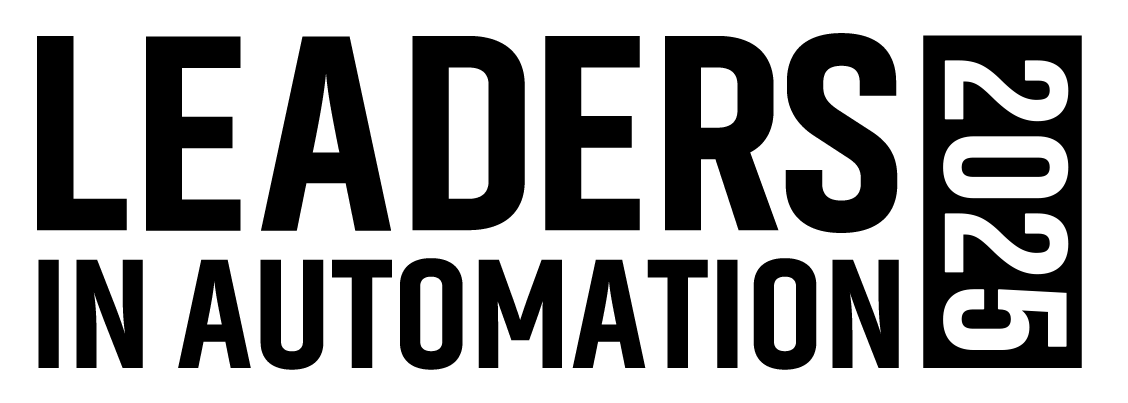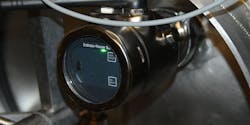Automating Quality Processes in Manufacturing
- Machine vision systems perform high-speed inspections with sub-millimeter precision, capturing images of every product for real-time AI analysis without fatigue or subjective judgment.
- Physical AI and machine learning enable predictive quality control by continuously analyzing signals to detect defects and trigger interventions before issues impact production output.
- And don’t forget the key role of controller technologies that manage critical variables like temperature and pressure, eliminating human-caused variations and preventing process drift.
Definitions of quality in manufacturing are either subjective or objective. They’re subjective when defined by the ideal visions of the manufacturer, operators, equipment vendors and end users. Such visions may not be realizable using current technologies.
Conversely, objective definitions are based on achievable levels of reliability, safety and cost effectiveness using available technologies, while also considering emerging solutions.
To get an objective view to help inform our audience’s application of AI and machine vision for quality control applications, Automation World spoke with Brandon Barbello (BB), chief operating officer of Archetype AI; Carinne Houston (CH), director of quality systems and customer satisfaction for Emerson’s Power and Water Solutions; Jason Pennington (JP), director of digital solutions at Endress+Hauser; David Isaacson (DI), vice president of product marketing at ETQ, a part of Hexagon; Chaani Rao (CR), technical marketing leadership development at Siemens; and Clayton Wilson (CW), product manager at Yokogawa Corp. of America.
AW: To start, what are some of the best examples you’ve seen of how automation directly improves product quality?
CW: Automation improves product quality by ensuring consistency and repeatability. For example, in a chemical process, automated controllers manage critical variables like temperature and pressure. This ensures every batch is exposed to the same conditions, eliminating variations that occur from manual adjustments. Similarly, a data acquisition system can continuously monitor and log critical variables, providing a detailed time-stamped record that proves the process is within specifications.
BB: A great example is predictive maintenance. Monitoring sensor signals, manufacturers can spot abnormal equipment behavior and fix it before defects occur. Automation also improves real-time anomaly detection, allowing AI to flag unusual patterns on the line. Automation also enables process visibility across systems, connecting signals from different parts of the factory so teams can see how a small change in one phase might affect quality downstream.
JP: Instrumentation advances are also important to recognize here, as product offerings have expanded from a single point of measurement to multi-variable devices. As that trend has evolved, we now have application-specific devices and platforms.
AW: How is machine vision technology typically used in quality control and what are its advantages over traditional inspection methods?
BB: Vision systems continuously capture images of every product and use AI to interpret them in real time. Combined with physical sensors, machine vision is a key part of an automated process’s ability to react to quality issues as they happen.
CR: Traditional systems have different applications they excel in, but general use cases are defect detection, assembly verification and part measurement. Machine vision’s advantages over traditional inspection are consistency, speed, data integration and that they don’t suffer from fatigue or produce subjective judgements.
CW: Machine vision performs high-speed, repetitive inspection tasks beyond the capability of humans to check for defects, measure dimensions with sub-millimeter precision and verify assembly accuracy.
Flexibility is achievable via modular hardware and reconfigurable software. Many industrial controllers use a modular backplane, allowing adding or swapping I/O modules to support new sensors or actuators without a complete system overhaul.
DI: With machine vision, visual inspections can take place at multiple manufacturing steps without slowing production processes. Also, pictures can be stored for review. This allows improvement of designs and processes to avoid future problems.
AW: In what ways can controller technologies, working with machine vision tech, reduce manufacturing variability?
CH: Manufacturing processes entail tolerance checks. Controller technology shares results of tolerance issues faster and can analyze more data variables. The best-case result is, of course, no anomalies, but equally important is immediate awareness of unacceptable variabilities.
CW: Controllers reduce variability via precise, closed-loop control. A standard process controller measures a variable and automatically adjusts an output to keep this variable at a specific setpoint. This prevents variables from drifting. In complex operations, programmable logic controllers manage multi-step processes, ensuring each step occurs in the same sequence and duration.
AW: How should manufacturers leverage AI and machine learning in automated quality control systems?
CR: AI and machine learning can capture and process more data, making for faster production-change assessments and decisions by conducting quality inspection 24/7. AI systems can be trained and adapt their thresholds. With AI, standards won’t vary across different operators, ensuring parts are held to the same standard.
By continuously analyzing real-world signals, physical AI is capable of detecting product defects and process deviations the moment they occur. It can automatically trigger interventions or adjustments before issues impact output.
BB: Emerging physical AI technologies enable manufacturers to move from reactive to proactive quality control. By continuously analyzing real-world signals, physical AI is capable of detecting product defects and process deviations the moment they occur. It can automatically trigger interventions or adjustments before issues impact output. Over time, the data also feeds back into the models, improving processes and delivering consistent, high-quality products.
CH: AI can be more predictive and offer additional insights into blind spots. It can learn a manufacturer’s requirements and processes and use that information to deliver customized answers. AI can combine current process states with site-specific historical data and known performance indicators to guide users to the best possible outcomes via natural language conversations.
DI: Most existing quality control systems look at single points along the manufacturing process, but complex manufacturing processes need more comprehensive views of production. Predictive quality analytics review multiple inputs at one time to better identify conditions that could lead to problems.
AW: How do automation technologies for quality control impact the workforce?
CW: Automation shifts worker roles from manual labor to supervision and maintenance. Manual tasks are reduced while new roles emerge requiring new skills. This translates to a need for a workforce with a strong understanding of process control, industrial networking, data analysis and robotics.
CR: Automation expands the need for personnel that can interface with technology and pick up where quality control detection systems leave off. This requires strong problem-solving skills and knowledge of automation systems.
CH: It’s natural to be hesitant about automation, however automation and workforce are a partnership. Automation provides faster insights into why something is performing poorly. This enables workers to take that information and make a data-supported decision. This requires upskilling personnel to work efficiently with new tools.
Automation also enables process visibility across systems, connecting signals from different parts of the factory so teams can see how a small change in one phase might affect quality downstream.
JP: Many manufacturers are increasing in-plant dialog among technicians and operators with their lab counterparts. These collaborations are based on installing in-line, real-time instruments to reduce lab analyses and/or extend intervals between lab measurements. While it's unclear whether in-line measurement and automation will replace best practices for quality control, there will continue to be impacts based on what’s becoming possible.
AW: How can manufacturers balance the cost of automation with the expected benefits in quality improvement?
CW: Balancing costs and benefits require review of the total cost of poor quality. Initial investment in a control system may appear high, but savings from reduced waste, increased throughput and fewer product recalls justifies the expense. Small pilot projects focusing on areas with the highest rate of defects are a good place to start. By proving value in one area, a business case can be built for wider implementation.
AW: Can automated quality control systems remain flexible to adapt to changes in product design or manufacturing processes?
CW: Flexibility is achievable via modular hardware and reconfigurable software. Many industrial controllers use a modular backplane, allowing users to add or swap I/O modules to support new sensors or actuators without a complete system overhaul. In regard to software, modern systems use object-oriented or function-block programming, which allows engineers to create reusable code modules. If a product design changes, the relevant code block can be modified or replaced without affecting remaining control logic.
DI: Manufacturers must ensure quality control systems can integrate with existing systems and be updateable. Quality control and automation systems should be based on open standards. For example, the ability to integrate with a variety of systems and processes requires open APIs, typically based on the REST API standard.
CR: Systems with onboard AI can adapt to environmental changes. As for production or design changes, AI is trainable on new products or controlled by automation logic to meet necessary changes.
JP: Consumer demand impacts manufacturers in what they produce and how they produce it. A quality plan, including key measuring or monitoring points, can help maintain efficiency, instrument health and vital data.
About the Author

Leaders relevant to this article:







